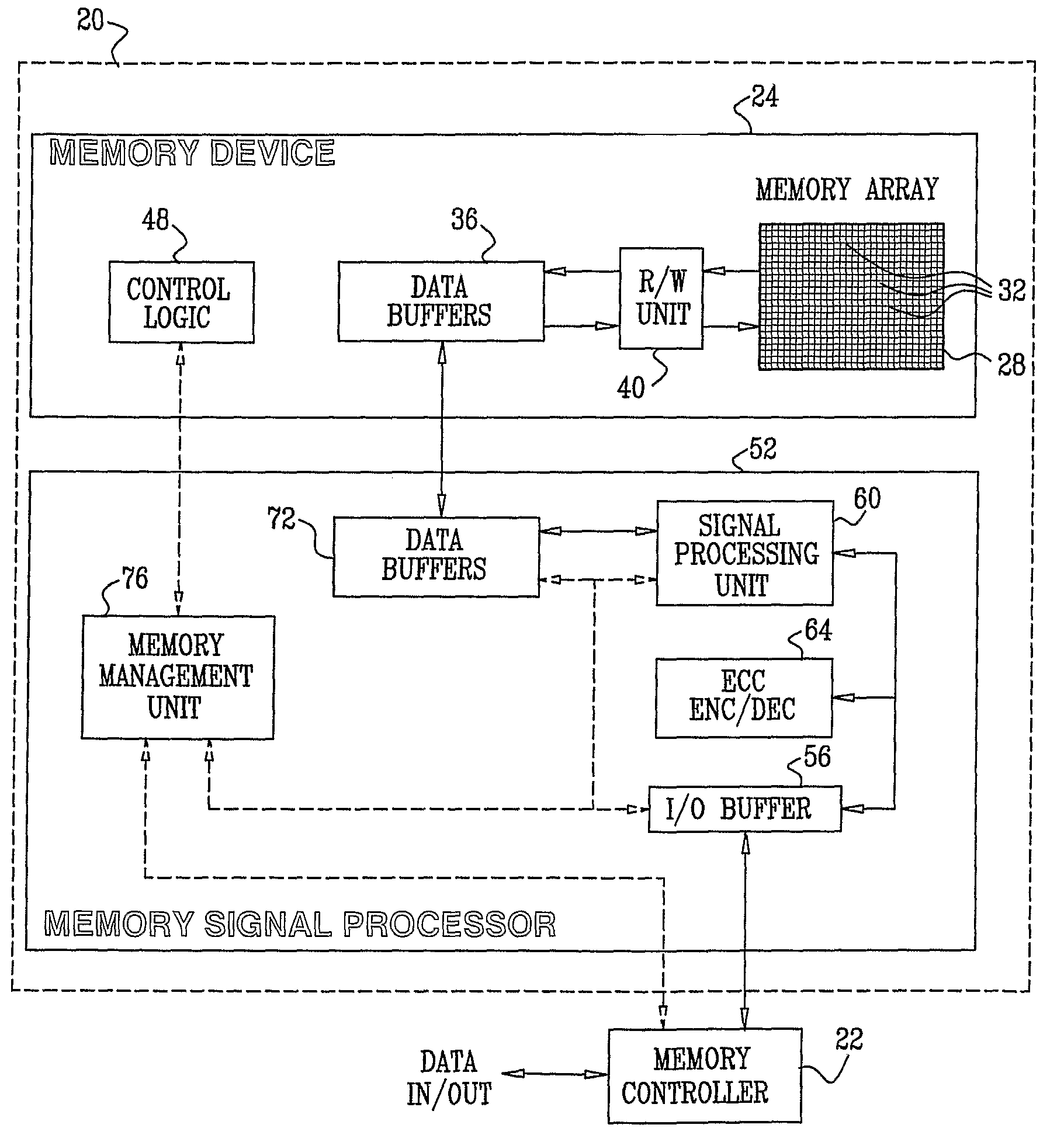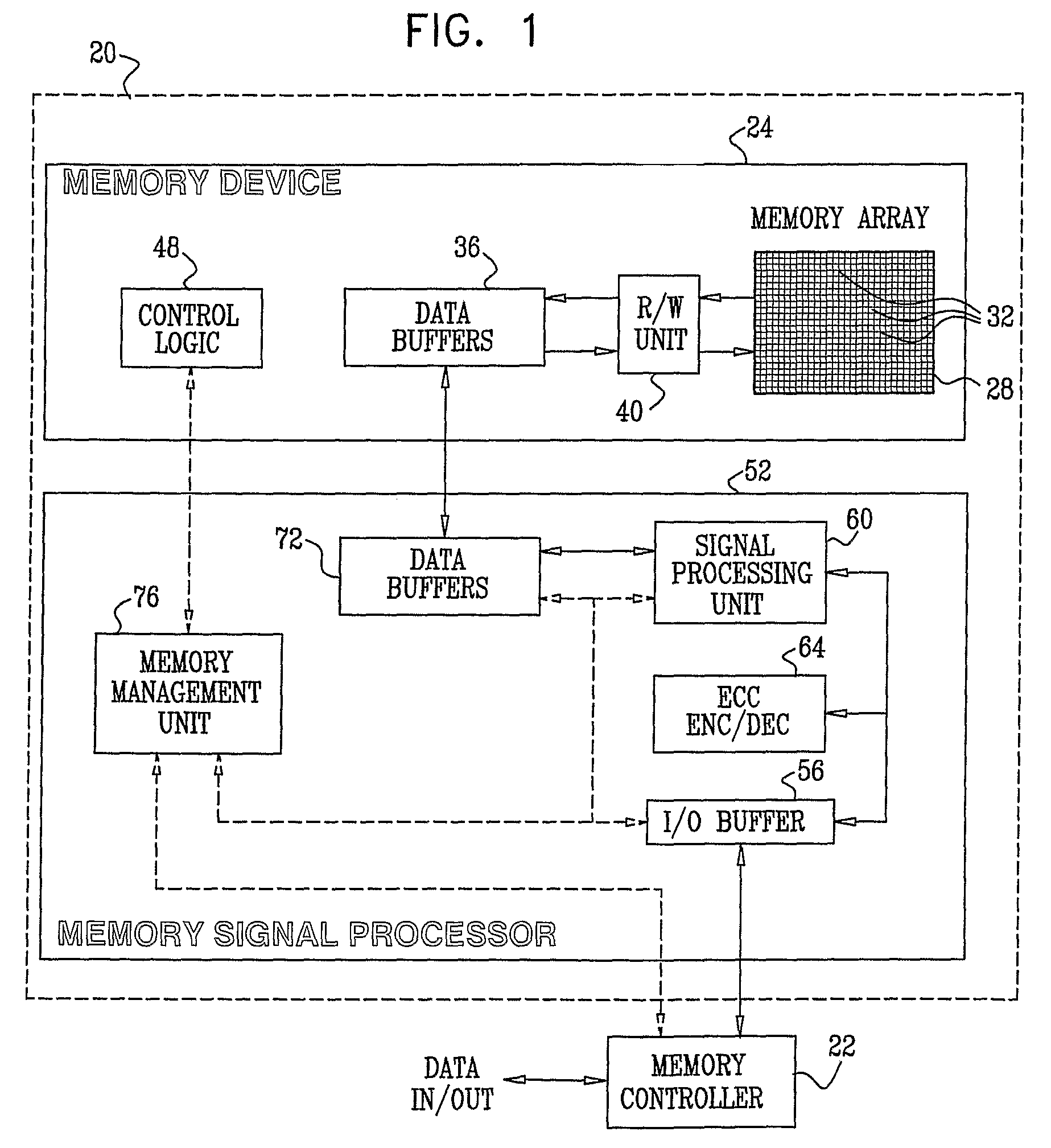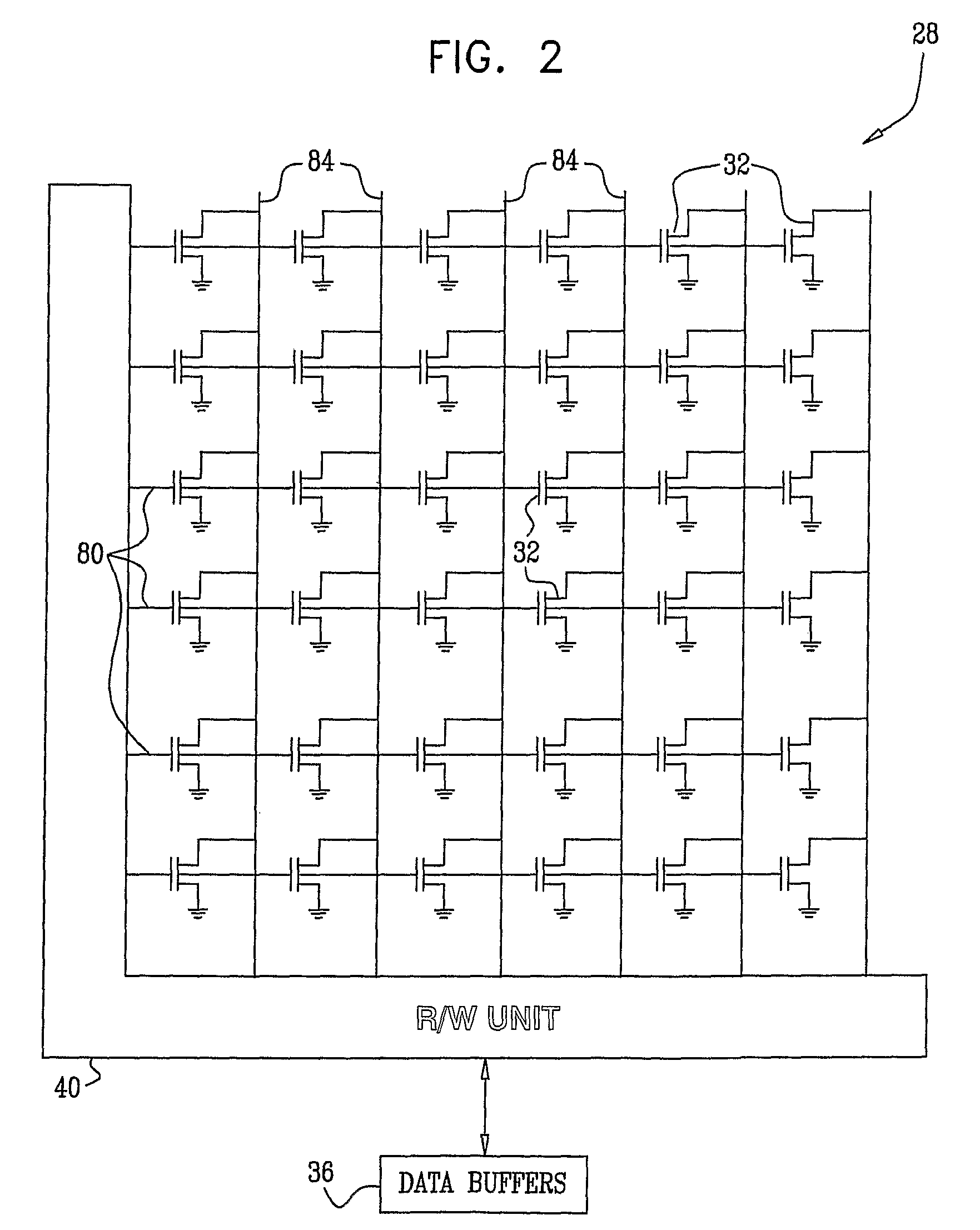Reducing programming error in memory devices
- Summary
- Abstract
- Description
- Claims
- Application Information
AI Technical Summary
Benefits of technology
Problems solved by technology
Method used
Image
Examples
Embodiment Construction
Overview
[0033]Some analog memory devices use a process of “program and verify” (P&V) in writing information to the memory cells. In a typical P&V process, a cell is programmed by applying a sequence of voltage pulses, whose voltage level increases from pulse to pulse. The programmed voltage level is read (“verified”) after each pulse, and the iterations continue until the desired level is reached. P&V processes are described, for example, by Jung et al., in “A 117 mm2 3.3V Only 128 Mb Multilevel NAND Flash Memory for Mass Storage Applications,”IEEE Journal of Solid State Circuits 11:31 (November, 1996), pages 1575-1583, and by Takeuchi et al., in “A Multipage Cell Architecture for High-Speed Programming Multilevel NAND Flash Memories,”IEEE Journal of Solid-State Circuits 33:8 (August,), pages 1228-1238, which are both incorporated herein by reference.
[0034]The embodiments of the present invention that are described hereinbelow improve upon the conventional program-and-verify model b...
PUM
 Login to View More
Login to View More Abstract
Description
Claims
Application Information
 Login to View More
Login to View More - R&D
- Intellectual Property
- Life Sciences
- Materials
- Tech Scout
- Unparalleled Data Quality
- Higher Quality Content
- 60% Fewer Hallucinations
Browse by: Latest US Patents, China's latest patents, Technical Efficacy Thesaurus, Application Domain, Technology Topic, Popular Technical Reports.
© 2025 PatSnap. All rights reserved.Legal|Privacy policy|Modern Slavery Act Transparency Statement|Sitemap|About US| Contact US: help@patsnap.com



